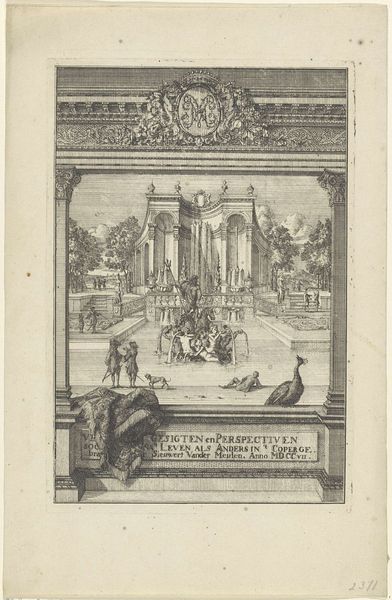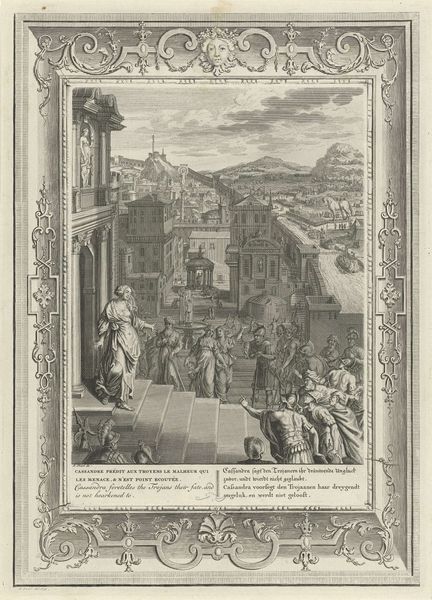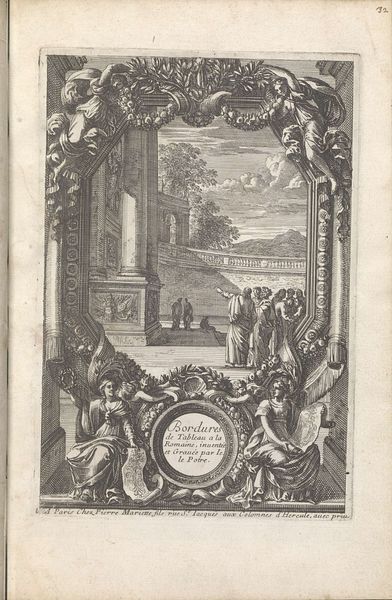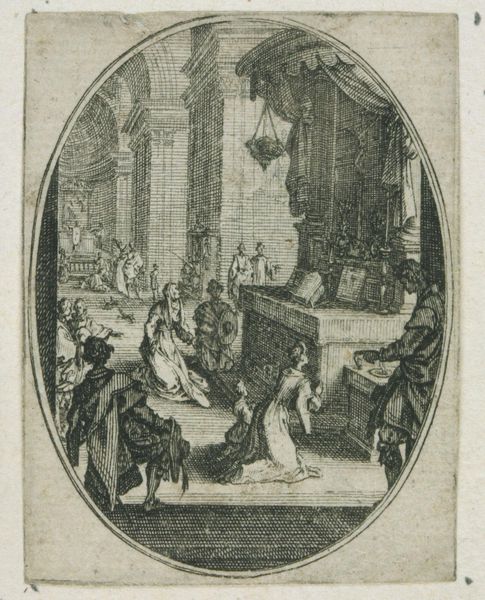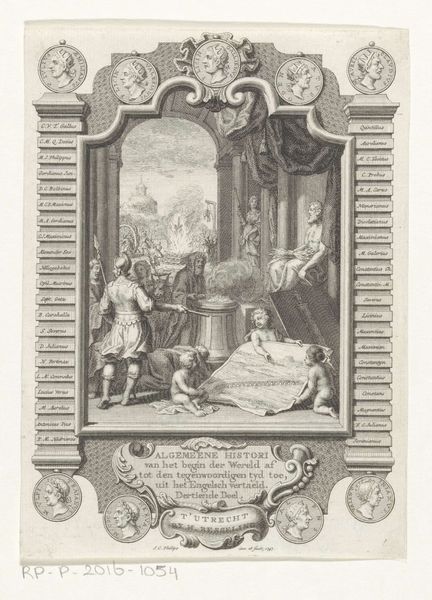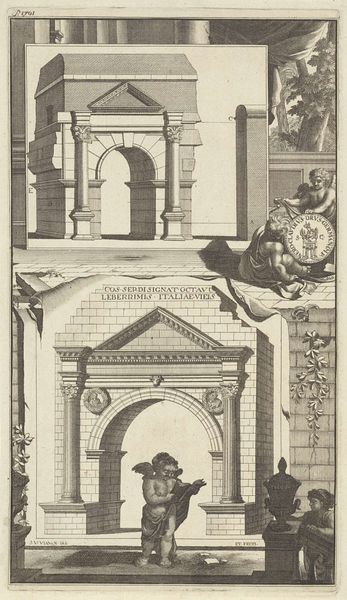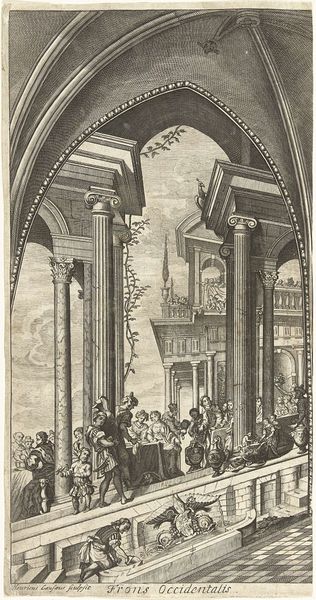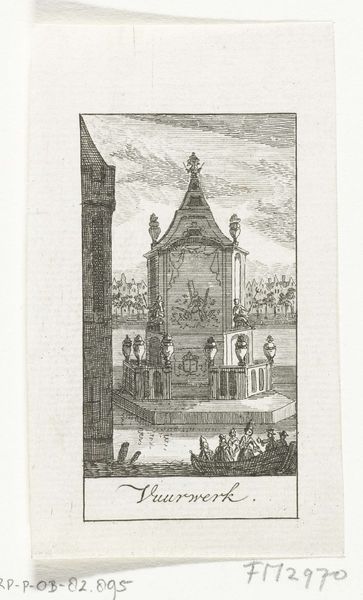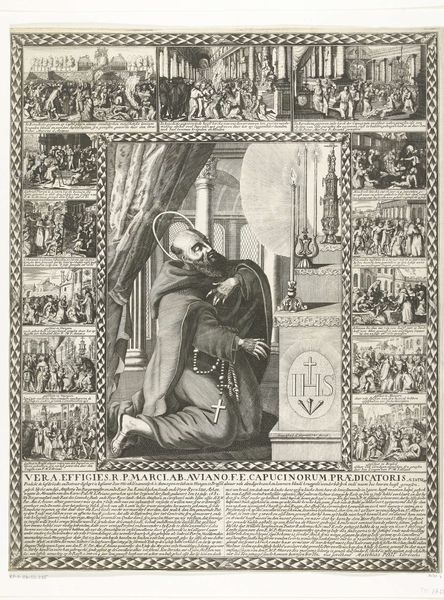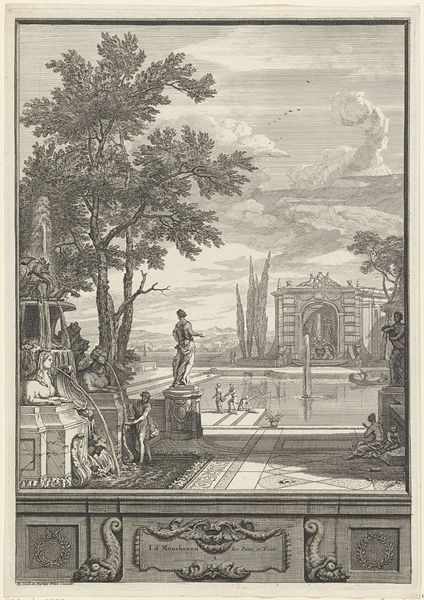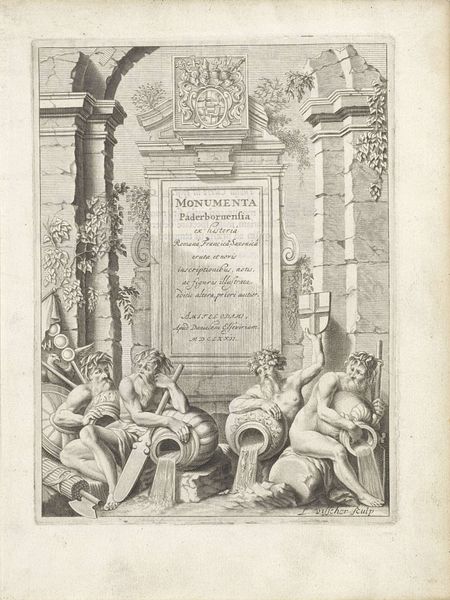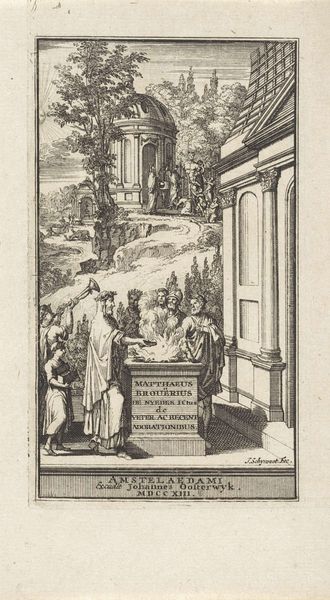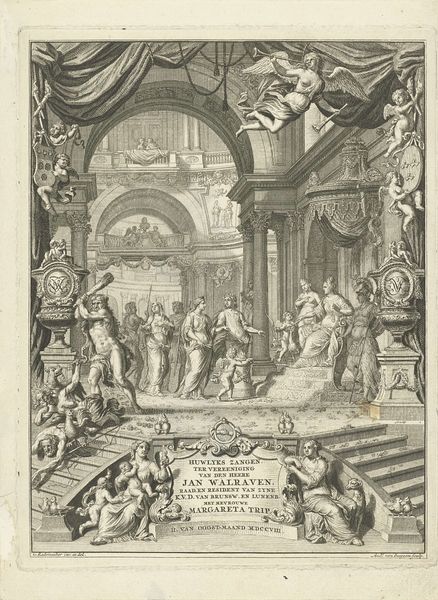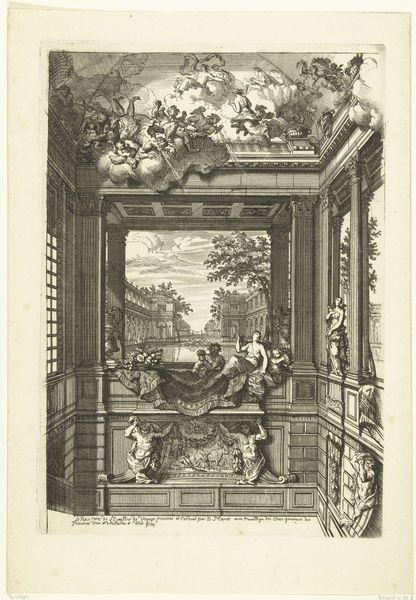
print, engraving, architecture
#
baroque
# print
#
landscape
#
engraving
#
architecture
Dimensions: height 248 mm, width 176 mm, height 350 mm, width 253 mm
Copyright: Rijks Museum: Open Domain
This print of the Temple of Minerva in Troy was made by Bernard Picart, most likely in the early 18th century, using etching and engraving. These are essentially linear media, where an image is built up from many thin, closely-placed marks. Look closely, and you'll see that the tonality, the areas of light and shadow, are created by hatching—parallel lines drawn close together or further apart. The architecture of the temple is depicted with incredible precision, as is the dramatic framing device with its swirling ornamentation. But what I find most interesting is the labor that went into this print. Etching and engraving are painstaking techniques, requiring intense concentration. The image would have been created by a highly skilled artisan working for Picart, whose name, sadly, we do not know. This reminds us that even seemingly straightforward images can be the result of a complex social process, with many hands contributing to the final effect. It encourages us to question the role of labor, skill, and the hierarchies that often exist in the art world.
Comments
No comments
Be the first to comment and join the conversation on the ultimate creative platform.
